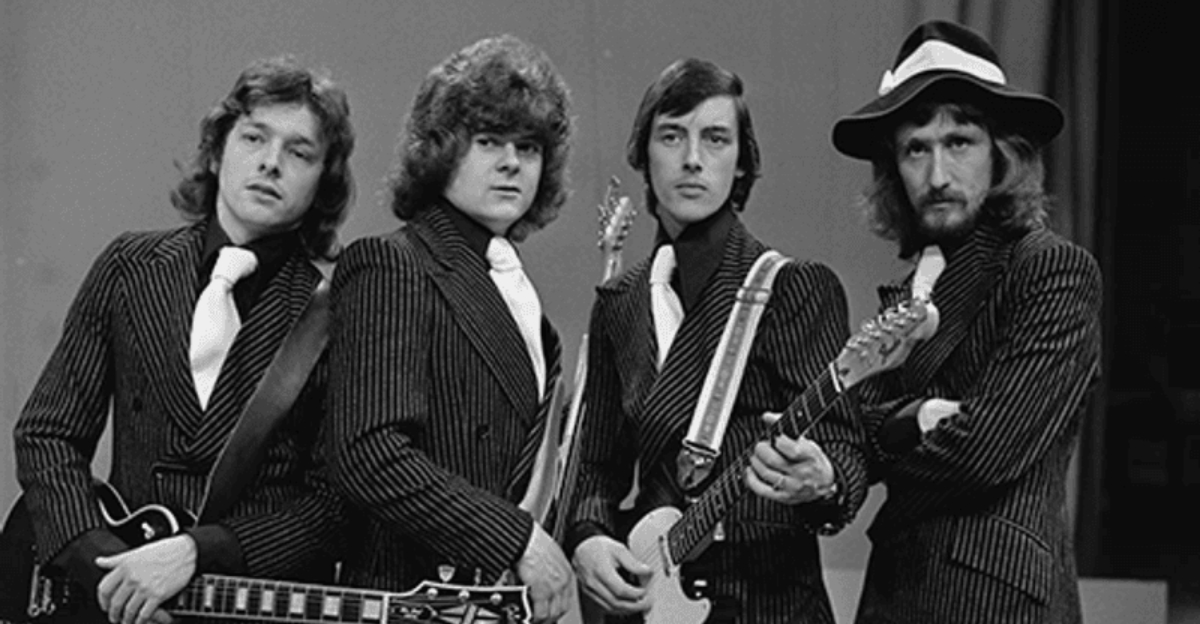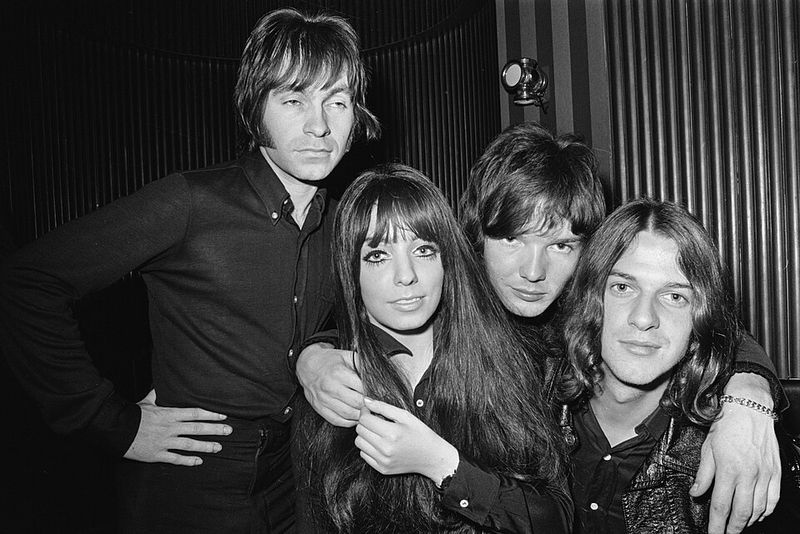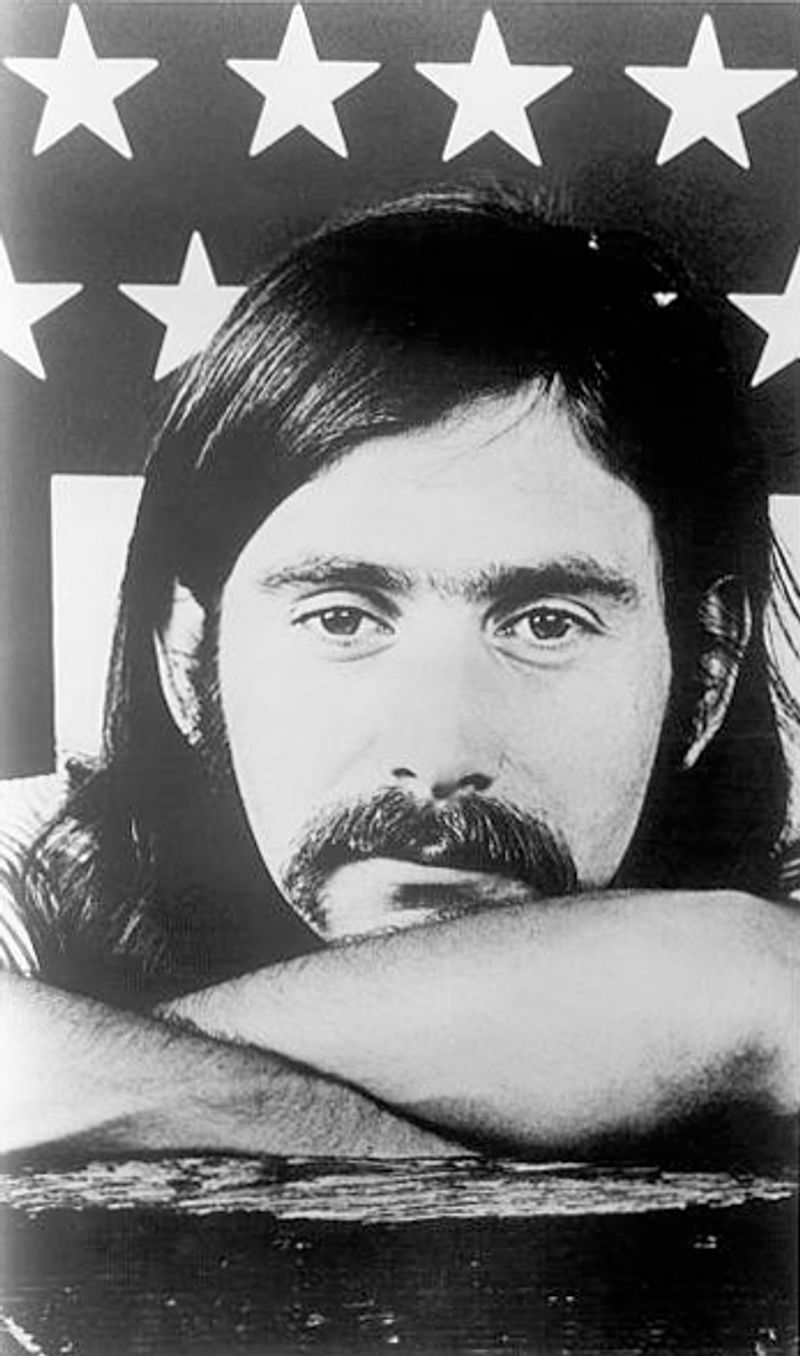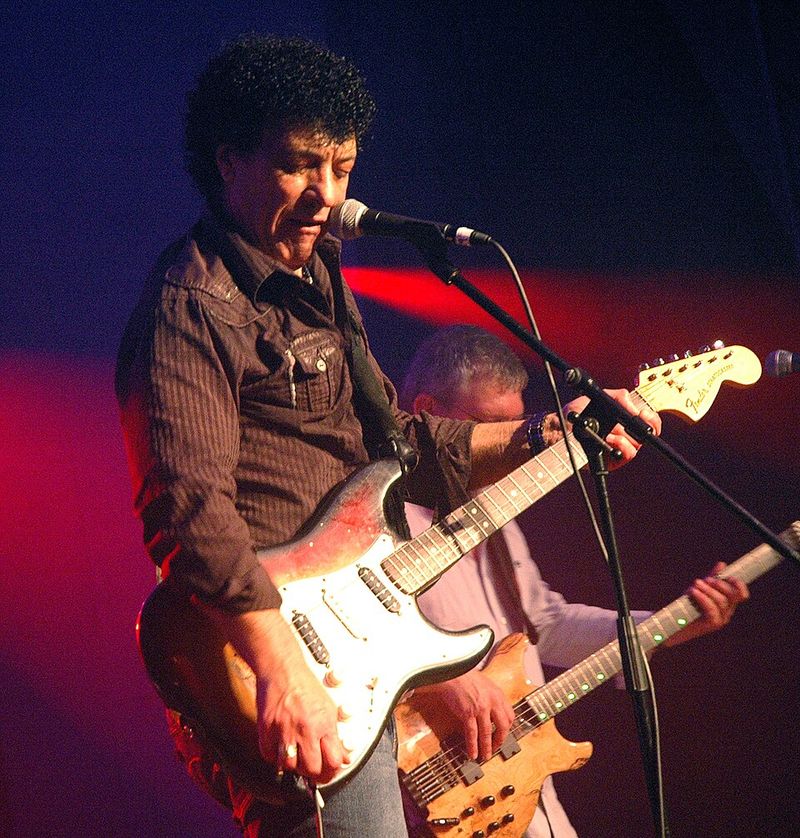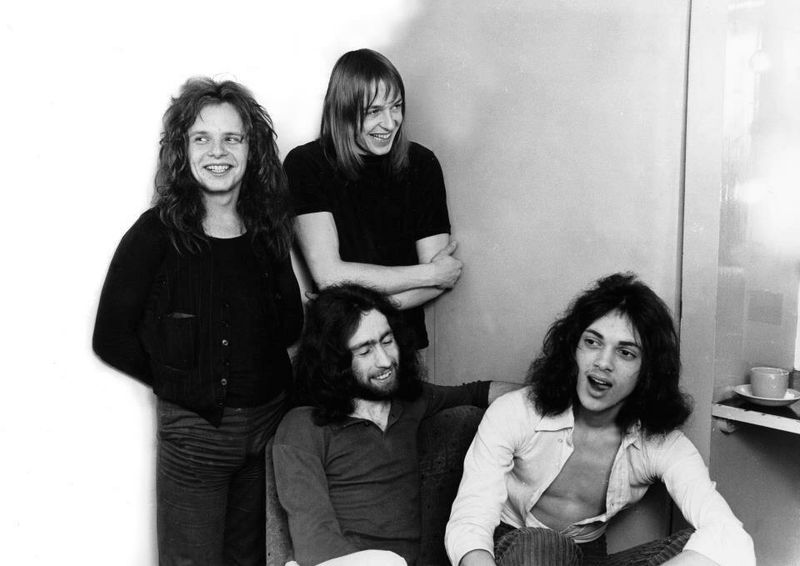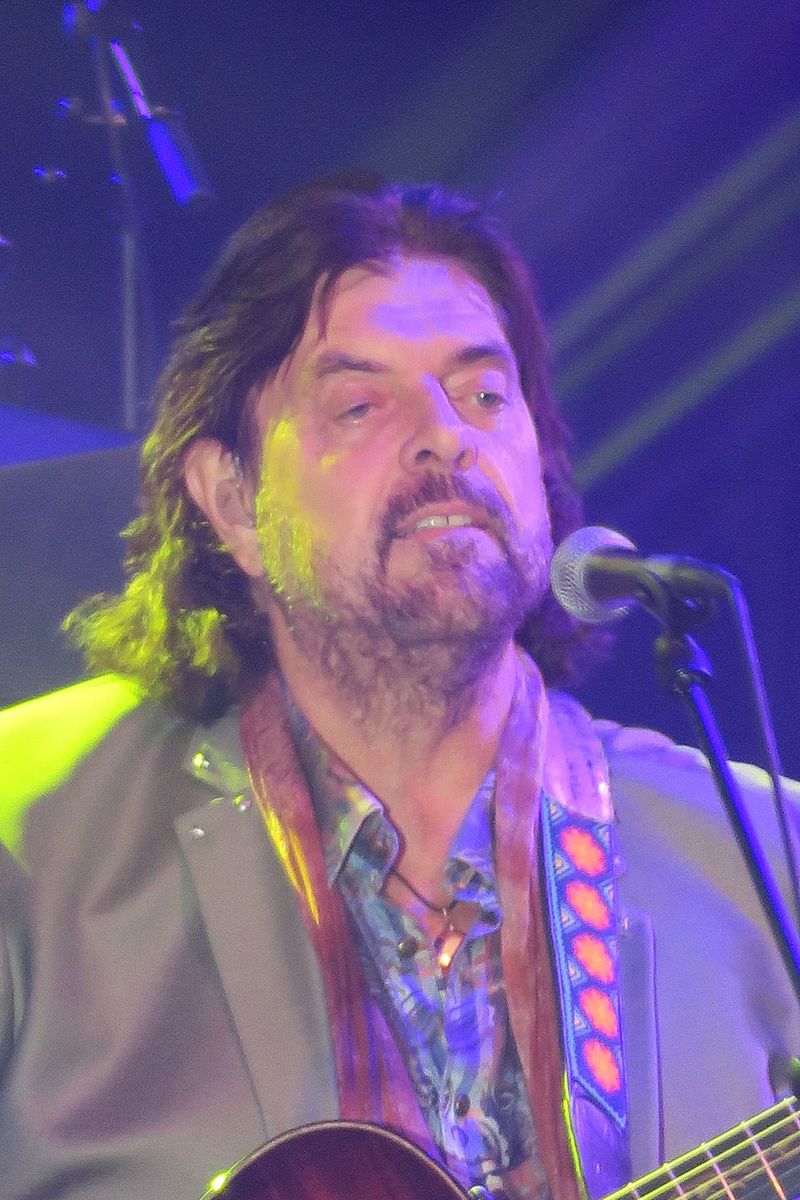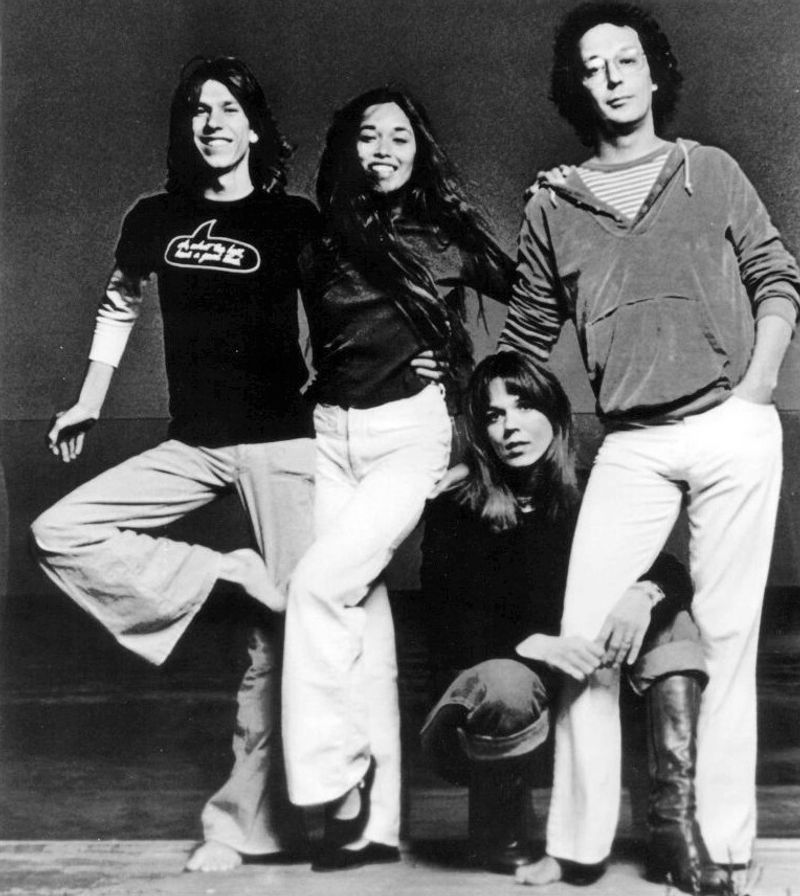Remember those songs from the 1970s that seemed to play everywhere, yet the bands behind them vanished from the charts just as quickly as they arrived? These one-hit wonders became the soundtrack of a generation, proving that you don’t need a long career to leave a lasting mark on music history. From funky grooves to gospel-rock anthems, these tracks captured lightning in a bottle and never let go. Get ready to rediscover the unforgettable tunes that defined an era and still make you sing along today.
1. Shocking Blue — “Venus” (1970)
Dutch rockers Shocking Blue conquered American radio with a fuzz-guitar riff that grabbed listeners by the collar and never let go. Mariska Veres delivered vocals that commanded attention, her voice cutting through the psychedelic haze of early ’70s rock like a lightning bolt. The track climbed all the way to number one on the Billboard Hot 100, a rare feat for a European band at the time.
What makes this song unforgettable is its perfect blend of raw energy and catchy melody. The hypnotic guitar line loops endlessly in your brain, while Veres’ powerful delivery adds an edge that separates it from typical bubblegum pop. Decades later, Bananarama’s cover introduced the song to a new generation, but the original remains the definitive version that captured the spirit of rock’s golden age.
2. Norman Greenbaum — “Spirit in the Sky” (1970)
A Jewish songwriter crafted one of the most iconic gospel-rock songs ever recorded, and nobody saw it coming. Norman Greenbaum’s monster guitar riff opens with a fuzz-tone crunch that instantly transports you to a different dimension. The song soared to number three on the U.S. charts and has remained a cultural touchstone ever since.
Greenbaum’s genius was combining spiritual themes with a rock sound that felt both rebellious and uplifting. The track’s heavy reverb and driving rhythm create an atmosphere that feels larger than life. Film directors and advertisers have licensed it countless times, recognizing its universal appeal and timeless energy. Though Greenbaum never replicated this success, he created something immortal that continues resonating with audiences across generations and backgrounds.
3. Mungo Jerry — “In the Summertime” (1970)
Few songs capture the carefree spirit of summer quite like this skiffle-pop masterpiece. Mungo Jerry blended jug-band rhythms with rock energy, creating an earworm that burrowed into the global consciousness. The track peaked at number three in the United States but dominated charts worldwide, becoming one of the best-selling singles of all time.
Ray Dorset’s distinctive vocals and the song’s infectious handclap rhythm make it impossible to forget. The lyrics celebrate freedom, sunshine, and good times with a simplicity that feels both innocent and timeless. Its stripped-down production gives it a raw, authentic quality that polished studio tracks often lack. Decades later, the song still soundtracks beach parties and summer playlists, proving that great melodies never go out of style.
4. Free — “All Right Now” (1970)
Paul Rodgers’ gravelly voice turned a simple bar-band story into a rock anthem that defined a generation. Free’s signature track reached number four in the United States and became a staple of classic rock radio that refuses to fade. The song’s swagger and confidence make it feel like the soundtrack to every great night out you’ve ever had.
What started as a spontaneous jam session became one of rock’s most recognizable riffs. The interplay between guitar and vocals creates a chemistry that feels effortless and electric. Though Free produced other quality tracks, none matched the cultural impact of this breakthrough hit. Stadium crowds still roar when those opening guitar notes ring out, proving that some songs transcend their era to become permanent fixtures in rock history.
5. Blues Image — “Ride Captain Ride” (1970)
Mysterious lyrics about a ship with seventy-three men sailed straight up the charts to number four. Blues Image created a laid-back groove that perfectly captured early ’70s vibes, blending rock with a touch of psychedelia. The song’s hypnotic rhythm and cryptic storytelling made it stand out from typical radio fare of the era.
Mike Pinera’s guitar work glides smoothly over the track’s easygoing foundation, creating a sound that feels both relaxed and purposeful. Listeners have debated the song’s meaning for decades, with theories ranging from drug references to biblical allegory. The band never cracked the Top 40 again, but this single achievement secured their place in rock history. Radio programmers still reach for it when they want to transport listeners back to a time when rock music embraced mystery and imagination.
6. Edison Lighthouse — “Love Grows (Where My Rosemary Goes)” (1970)
Session singers assembled under a made-up band name and accidentally created pure pop magic. This bubblegum gem climbed to number five in the United States and topped the UK charts, proving that great hooks matter more than band credentials. The track’s sunny disposition and irresistible melody made it an instant radio favorite.
Tony Burrows provided the lead vocals, though he was simultaneously singing for multiple studio projects during this era. The song’s cheerful horns and bouncing rhythm section create a feeling of pure joy that’s hard to resist. Its sing-along chorus embedded itself in popular culture, appearing in films and commercials for decades. Though Edison Lighthouse never truly existed as a touring band, their one shining moment continues bringing smiles to listeners who appreciate perfectly crafted pop confections.
7. Focus — “Hocus Pocus” (U.S. single 1973)
Yodeling, flute solos, and progressive rock fireworks collided in one of the most bizarre Top 10 hits America ever embraced. Dutch band Focus created something completely unique that somehow resonated with mainstream audiences, peaking inside the U.S. Top 10. Thijs van Leer’s yodeling vocals sound like nothing else on classic rock radio, making the track instantly recognizable from its opening notes.
The song shifts through multiple movements like a miniature rock symphony, showcasing technical virtuosity without sacrificing accessibility. Guitar and flute trade licks in unexpected ways, while the rhythm section navigates complex time signatures with precision. Its sheer weirdness became its greatest asset, offering something completely different from typical radio fare. Cult favorite status followed naturally, with new generations discovering the track and wondering how something so strange became so popular.
8. Terry Jacks — “Seasons in the Sun” (1974)
A bittersweet goodbye to life itself dominated radio in 1974, climbing to number one despite its heavy subject matter. Terry Jacks adapted Jacques Brel’s French original into an English-language tearjerker that resonated with millions. The song’s emotional weight and memorable melody created a combination that proved irresistible to listeners craving substance alongside their pop music.
Each verse addresses a different person as the narrator prepares to leave the world behind, creating an intimate portrait of final moments. The production’s lush strings and gentle acoustic guitar provide a soft bed for Jacks’ earnest vocals. Critics dismissed it as overly sentimental, but audiences embraced its genuine emotion and honesty. Though Jacks never matched this success stateside, he created a cultural moment that defined 1974. The song remains a touchstone for anyone who appreciates music’s power to express life’s most profound moments.
9. Paper Lace — “The Night Chicago Died” (1974)
British musicians spun a completely fictional tale of Chicago gangster violence and somehow scored a number one American hit. Paper Lace’s dramatic storytelling and catchy chorus proved that historical accuracy matters less than emotional resonance. The song’s vivid imagery painted pictures in listeners’ minds, transporting them to a romanticized past that never quite existed.
The narrator describes a night when his father, a Chicago cop, faced down Al Capone’s gang in an epic shootout. Tension builds through the verses before releasing in a triumphant chorus celebrating survival and heroism. The production’s theatrical flair and urgent rhythm create genuine excitement despite the invented narrative. American audiences embraced the song without questioning its dubious historical basis, proving that great pop music transcends factual concerns. It remains a fascinating example of how British musicians interpreted and sold American mythology back to Americans themselves.
10. Blue Swede — “Hooked on a Feeling” (1974)
“Ooga-chaka” entered the cultural lexicon when Swedish rockers transformed B.J. Thomas’s original into something completely new. Blue Swede’s version went all the way to number one in the United States, proving that creative reinterpretation can eclipse the original. The infectious chant and driving rhythm created an irresistible combination that dominated radio and dance floors alike.
The band built their arrangement around a vocal hook borrowed from British musician Jonathan King’s version, adding their own Swedish twist. That repetitive chant became the song’s most memorable element, instantly recognizable across generations. The production’s energy and exuberance perfectly captured mid-’70s pop sensibilities while maintaining timeless appeal. Decades later, its inclusion in Guardians of the Galaxy introduced the track to millions of new fans. Blue Swede never replicated this success, but they gave the world a version that became definitive, overshadowing all others.
11. Pilot — “Magic” (1975)
Alan Parsons’ production magic transformed this Scottish band’s airy pop confection into a number five U.S. hit. Pilot created something ethereal and light, a song that floats rather than rocks, offering listeners a gentle escape. The track’s shimmering keyboards and soft harmonies created a sonic landscape that felt both sophisticated and accessible.
The word “magic” repeats throughout, functioning as both title and thesis statement for the song’s enchanting atmosphere. Parsons’ studio expertise gave the recording a polish that elevated it above typical pop fare. Film and television music supervisors have reached for it countless times, recognizing its ability to evoke nostalgia and wonder. Though Pilot produced other quality work, nothing matched the commercial and cultural impact of this breakthrough moment. The song remains a testament to the power of great production and melody working in perfect harmony.
12. Vicki Lawrence — “The Night the Lights Went Out in Georgia” (1973)
A comedian and actress proved she could sing by delivering a Southern gothic murder ballad straight to number one. Vicki Lawrence’s dramatic interpretation brought the song’s twist ending to vivid life, creating a narrative as compelling as any short story. The track’s dark themes and unexpected conclusion set it apart from typical radio fare, offering substance alongside catchiness.
Bobby Russell’s lyrics unfold like a mystery novel, leading listeners down one path before revealing the shocking truth in the final verse. Lawrence’s emotional delivery sells every moment, making listeners believe in the characters and their tragic fates. The production’s country-rock blend gave it crossover appeal that conquered both pop and country charts. Though Lawrence remained better known for her television work, this single achievement demonstrated her versatility and talent. The song endures as one of the decade’s most memorable story-songs, proving that great narratives never go out of style.
13. Starland Vocal Band — “Afternoon Delight” (1976)
Soft-rock harmonies masked suggestive lyrics about daytime romance, creating a number one hit that made parents blush once they understood. Starland Vocal Band’s smooth vocal blend and upbeat melody disguised the song’s cheeky subject matter perfectly. The track dominated summer 1976, becoming an inescapable presence on radio despite its risque implications.
Bill Danoff wrote the song after seeing the phrase on a restaurant menu, transforming an innocent dessert description into something decidedly adult. The group’s four-part harmonies created a lush, sophisticated sound that felt both contemporary and timeless. Critics often dismissed it as lightweight, but its craftsmanship and catchiness proved undeniable. The band even earned a Grammy and their own television variety show, though neither translated into sustained success. The song remains a fascinating artifact of a more innocent era when innuendo required actual subtlety and listeners enjoyed decoding hidden meanings.
14. Alan O’Day — “Undercover Angel” (1977)
A successful songwriter stepped into the spotlight and landed a surprise number one hit while continuing to pen tracks for other artists. Alan O’Day’s dreamy tale of a midnight visitor captured imaginations with its mysterious premise and memorable melody. The song’s soft-rock arrangement and O’Day’s earnest vocals created an intimate atmosphere that drew listeners into the story.
The lyrics blur the line between dream and reality, leaving listeners uncertain whether the angel was real or imagined. That ambiguity became part of the song’s charm, inviting interpretation and discussion. O’Day’s background as a writer for artists like Helen Reddy gave him the skills to craft something both commercially viable and artistically satisfying. Though he never matched this solo success, his songwriting career continued flourishing behind the scenes. The track remains a testament to the power of mystery and romance in pop music, proving that not every story needs a clear resolution.
